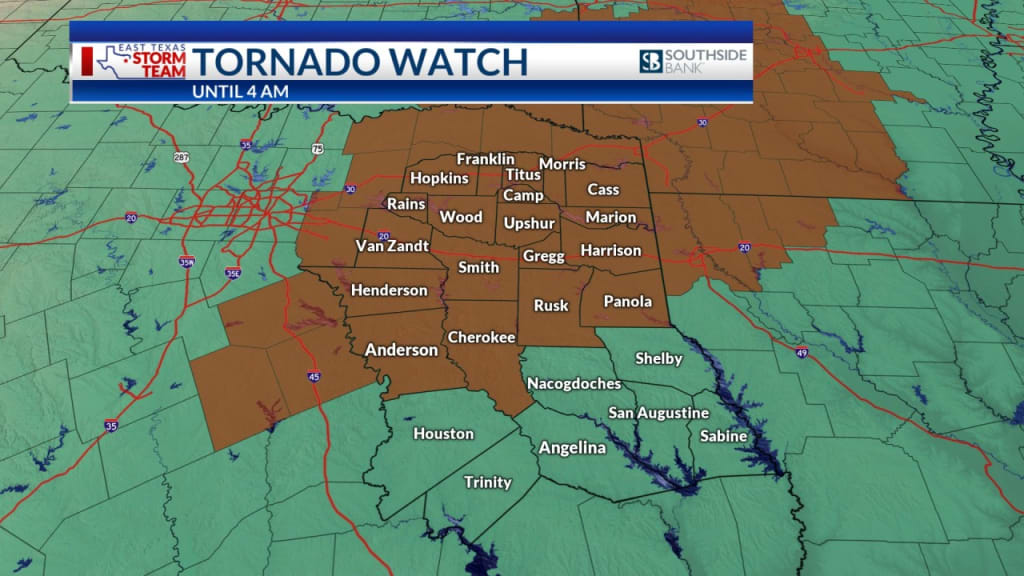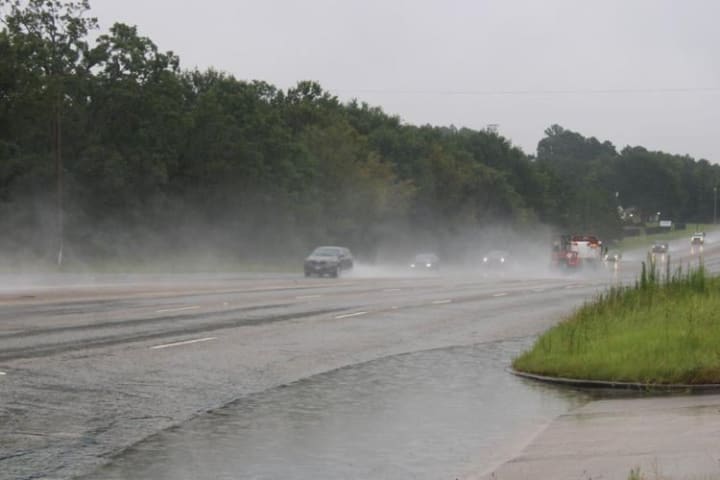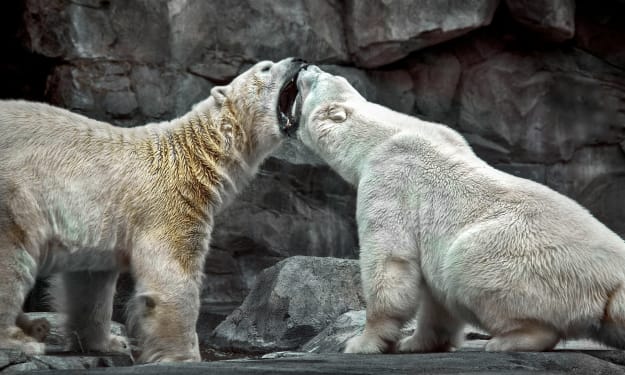Tornado Warnings Expire in East Texas as Tropical Storm Beryl Brings Heavy Rain and Severe Storms
Tornade • Alerte aux tornades • National Weather Service

All tornado warnings have expired in East Texas as Tropical Storm Beryl moves through the region, bringing heavy rain and severe storms. The storm made landfall along the Texas coast on Monday morning as a Category 1 hurricane before weakening to a tropical storm.
- Current Situation in East Texas
- Tornado watches and flood warnings have been issued throughout most of East Texas, including Smith, Gregg, Upshur, Cherokee, Harrison, Marion, Rusk, and Panola counties.
- Heavy rain is expected to continue through the night, with the potential for flash flooding.
- Power outages have been reported in several East Texas counties, including Smith, Anderson, Cherokee, Henderson, and Rusk.
- The City of Tyler is urging residents to be cautious, avoid non-essential travel, and turn around if they encounter water over the roadways.
Understanding Tornadoes and Hurricanes
Tornadoes are violently rotating columns of air that extend from a thunderstorm to the ground, while hurricanes are large, swirling storms that form over warm ocean waters. Although they are distinct weather phenomena, tornadoes and hurricanes can interact in complex ways, particularly when a hurricane makes landfall.
Why Tornadoes Happen with Landfalling Hurricanes
When a hurricane makes landfall, it interacts with the land and can produce conditions favorable for tornado formation. The combination of the hurricane's strong winds, abundant moisture, and instability in the atmosphere can create the perfect environment for tornadoes to develop.
"The environment is supportive of severe storms, the NWS says, noting tornadoes and damaging winds as the main threats," according to the Tyler Paper.
Historical Data and Examples
Tropical Storm Beryl has already spawned a record number of tornado warnings throughout East Texas, with minimal damage reported so far. In the past, landfalling hurricanes have been responsible for numerous tornado outbreaks, such as Hurricane Katrina in 2005 and Hurricane Irma in 2017.
Safety Tips and Preparedness
- Turn on wireless emergency alerts on your cell phone and sign up for local emergency alert systems.
- Have a safety plan in place in the event of a tornado, such as identifying a safe room in your home.
- Avoid driving into high water and turn around if you encounter flooded roads.
- Stay informed about the latest weather conditions and heed all tornado warnings and watches.
Conclusion
Tropical Storm Beryl has brought heavy rain and severe storms to East Texas, with tornado warnings now expired but the threat of flash flooding continuing. While tornadoes and hurricanes are distinct weather phenomena, they can interact in complex ways, particularly when a hurricane makes landfall. By staying informed, prepared, and heeding all safety warnings, residents in East Texas and other vulnerable areas can stay safe during these potentially dangerous weather events.
How do tornadoes form during hurricanes
Tornadoes can form during hurricanes when the hurricane makes landfall and interacts with the land. This interaction causes the winds near the surface to slow down, while the upper-level winds maintain their speed, creating wind shear.

The wind shear leads to a column of rotating air that can generate a tornado, typically in the northeast quadrant (also known as the right-front quadrant) of the hurricane. Tornadoes spawned by hurricanes usually form within the first 12 hours after the storm makes landfall.
Tornadoes that form within hurricanes are often rain-wrapped, making them hard to see, and they are usually weak (EF-0 to EF-2) and brief in duration. However, they can still be particularly dangerous because they tend to develop rapidly, sometimes in as little as one or two minutes, and move quickly at speeds of 50 to 60 mph.
The combination of the hurricane's strong winds, abundant moisture, and atmospheric instability creates the ideal conditions for tornado formation. While not all hurricanes produce tornadoes, more than half of them spawn at least one tornado after making landfall.
Discover Also
About the Creator
Jack Brel
At Vocal Media, I am excited to be a part of a platform that values creativity and original content. I am confident that my skills and experience will enable me to create impactful campaigns and bring value to the Vocal Media community
Enjoyed the story? Support the Creator.
Subscribe for free to receive all their stories in your feed.






Comments
There are no comments for this story
Be the first to respond and start the conversation.